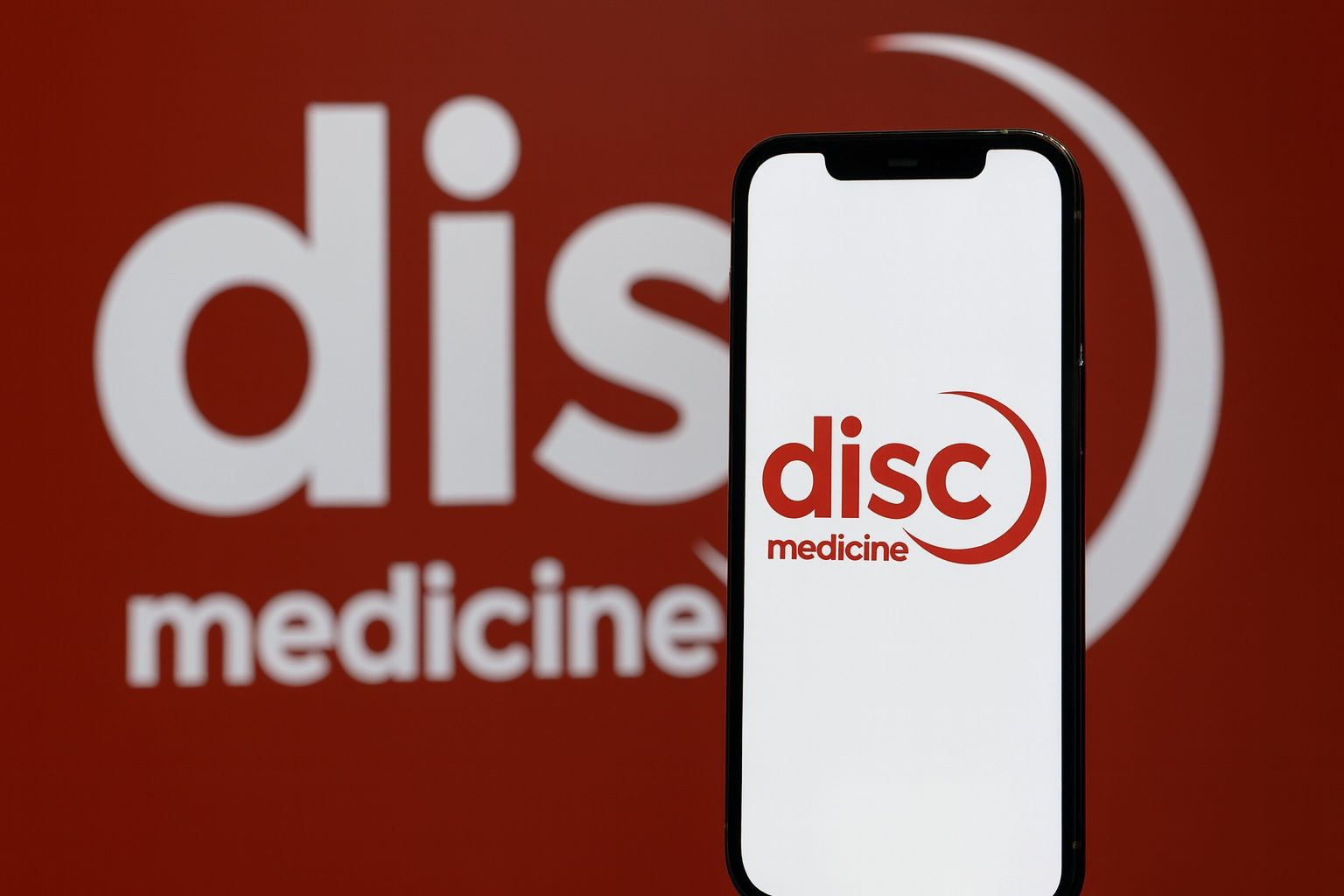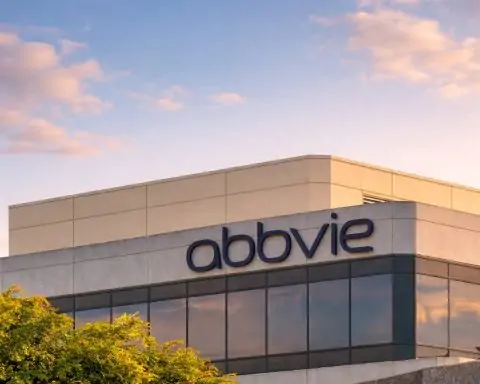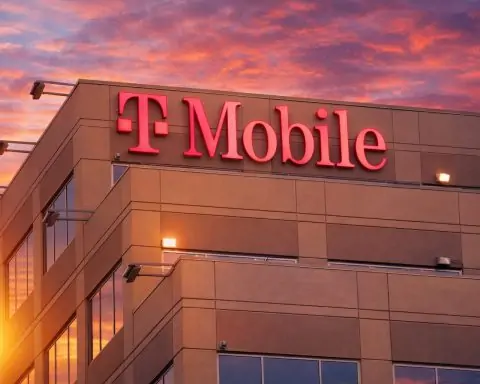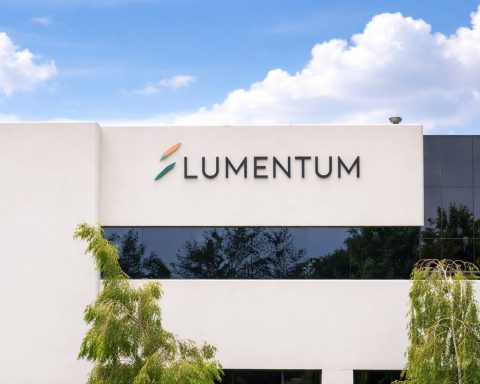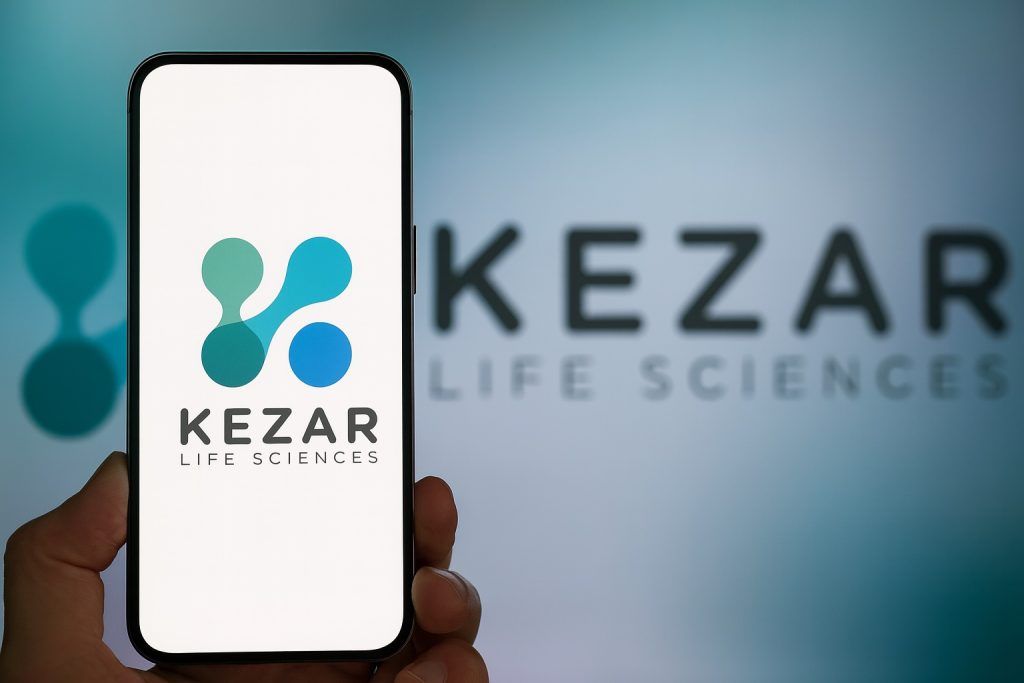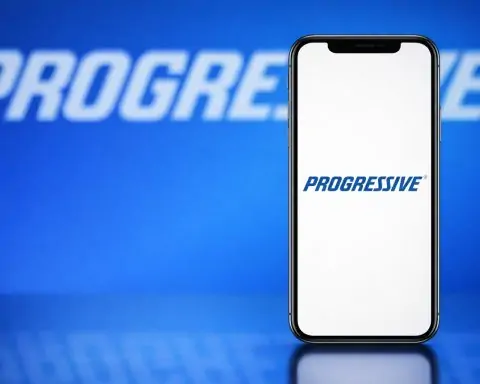- Stock Skyrockets ~25%: Disc Medicine’s share price surged by 25.5% to around $93 on October 17, 2025, hitting a new high after the company secured a special FDA priority review voucher [1]. The stock had been trading in the mid-$70s earlier in the week [2], near its prior 52-week high of ~$78 [3].
- FDA Priority Voucher Granted: The FDA selected Disc’s lead drug bitopertin as one of nine initial recipients of a Commissioner’s National Priority Voucher (CNPV) – a new program to fast-track critical therapies [4] [5]. This voucher could slash the FDA review time to just 1–2 months (from the usual ~6–10 months) once the application is filed [6] [7].
- Analysts Hike Price Targets: Following the FDA news, multiple analysts sharply raised their targets on IRON. Cantor Fitzgerald boosted its 12-month price target to $153 (from $132) with an Overweight rating [8], citing the voucher’s impact. H.C. Wainwright reiterated a Buy with a $118 target, Raymond James lifted its target from $89 to $108 (Strong Buy) [9], and others like SVB Leerink increased theirs to $100 (Outperform) [10].
- NDA Filed – Rapid Decision Expected: Disc Medicine submitted a New Drug Application (NDA) for bitopertin on September 30, 2025 [11], seeking accelerated approval for erythropoietic protoporphyria (EPP). Under standard timelines, the FDA’s filing decision is due by late November [12]; with the CNPV voucher in hand, an approval decision could arrive as early as late December 2025 or January 2026 [13] – far sooner than originally anticipated.
- Rare Disease Breakthrough Potential: Bitopertin is aimed at EPP, a rare genetic disease causing extreme light sensitivity and painful skin reactions [14]. If approved, it would be the first therapy to address EPP’s underlying cause (toxic heme metabolite buildup). Currently, the only FDA-approved EPP treatment is Scenesse (afamelanotide, Clinuvel), approved in 2019, which helps patients tolerate sunlight but does not cure the disease [15]. Phase 2 trials of bitopertin showed significant reductions in toxic PPIX levels and improved patients’ light tolerance and quality of life [16], underscoring its potential to transform EPP care.
- Pipeline & Upcoming Catalysts: Beyond bitopertin, Disc is advancing a portfolio of blood disorder drugs. It will present new clinical data on its anemia drug DISC-0974 (for anemia in chronic kidney disease and myelofibrosis) at the upcoming 2025 American Society of Nephrology conference [17]. Another candidate, DISC-3405, is an oral hepcidin inducer in early trials for polycythemia vera (a rare blood cancer) [18] – a similar mechanism to Protagonist Therapeutics’ rusfertide (a hepcidin mimetic) which recently showed positive Phase 3 results. These pipeline programs, alongside bitopertin, highlight Disc’s focus on innovative hematology therapies.
- Financial Strength: Disc Medicine appears financially well-positioned to fund its pipeline. The company recently secured up to $200 million in non-dilutive financing (via a debt facility with Hercules Capital) to support development through 2026, boosting its cash runway. It holds zero product revenue to date and remains in net loss (EPS –$4.47) as a clinical-stage biotech [19], but its balance sheet is strong with a high current ratio (~32) and minimal debt [20]. Notably, institutional investors own ~98% of IRON’s shares [21], indicating strong confidence from biotech-focused funds, though some insiders have taken profits with stock sales in recent months [22].
- Sector Context – Biotech in 2025: Disc’s rally comes amid a broader uptick in biotech sentiment in 2025. Investors have been rewarding companies with promising late-stage drugs, especially in rare diseases where regulatory support is robust. The FDA’s new voucher program itself reflects a push to accelerate treatments for high-priority conditions [23]. Big Pharma interest in hematology and rare disease assets is running high – for example, Merck’s $1.35B acquisition of Imago BioSciences in 2023 (for an innovative blood disorder drug) underscored the appetite for breakthrough therapies [24]. In the same vein, Disc’s own hepcidin program for polycythemia vera positions it in a competitive field that recently saw Protagonist Therapeutics partner with Takeda after positive PV trial results [25]. The favorable environment and strategic interest in this sector could make Disc a potential takeover candidate if its clinical progress continues.
- Short-Term & Long-Term Outlook: In the short term, all eyes are on the FDA’s next steps for bitopertin. The agency’s formal acceptance of Disc’s NDA (expected by Nov. 30) is the next milestone; any FDA requests or updates will be closely watched. Disc Medicine is also scheduled to report Q3 2025 earnings on November 6, 2025, which may provide updates on the regulatory timeline and financial guidance [26]. Given the recent run-up, some volatility is likely as traders react to incremental news. However, analyst consensus remains bullish – even before the latest news, price targets ranged from ~$85 up to $132 [27], and those have now been revised upward with multiple “Buy/Strong Buy” ratings reaffirmed. For the long term, the company’s trajectory will hinge on bitopertin’s approval and commercial rollout, as well as progress in its other programs. If bitopertin wins FDA approval in the coming months, Disc could launch the first disease-modifying EPP therapy by 2026, potentially capturing the majority of this niche market. Analysts note that success in EPP could unlock further upside – Cantor’s $153 target is predicated on bitopertin’s market potential plus pipeline value [28] [29]. Conversely, risks remain: any FDA delays, safety concerns, or efficacy issues in ongoing trials could dampen the stock’s momentum. As with many biotech stocks that have surged, valuation is elevated (Disc trades at ~5x book value vs ~2.5x industry average [30] [31]), reflecting high expectations. Overall, the sentiment on IRON is optimistic – a strong cash position and FDA’s vote of confidence have bolstered hopes that Disc Medicine is on the cusp of a breakthrough for patients and investors alike.
FDA Voucher Ignites IRON Stock Rally
Disc Medicine’s stock price (NASDAQ: IRON) spiked dramatically in mid-October 2025 after news of the FDA voucher, vaulting from the mid-$70s to the low-$90s in a single day [32]. On Friday (Oct. 17), IRON opened around $85 and surged to an intraday high of $92.50 before closing at $93.00, marking a ~25% jump on the day [33]. This leap capped a steady uptrend over the past month – the shares were trading near $60 in early September and gradually climbed into the $70s as anticipation built around bitopertin’s NDA filing and review [34] [35]. The FDA’s award of a priority review voucher was the clear catalyst for the latest rally, as it significantly accelerates Disc’s timeline to a potential approval. The stock’s year-to-date performance now far outpaces broader biotech indices, reflecting how quickly sentiment can turn when a small biotech achieves a major regulatory win.
Investor enthusiasm saw IRON hit all-time highs on this news. The ~$93 closing price on Oct. 17 is not only a 52-week high but also the stock’s highest level since Disc Medicine went public via merger in 2022. Trading volume spiked as well – over 760,000 shares changed hands on Oct. 17, roughly triple the typical daily volume [36] – indicating intense interest from investors positioning for the FDA decision. “The market is clearly excited about the expedited approval prospects,” noted one analyst, pointing out that the voucher could shave several months off the wait for bitopertin’s verdict. Prior to the announcement, short interest in IRON was relatively low and insider selling had ticked up (insiders sold ~176,000 shares in the past quarter) [37], but the strong institutional ownership suggests that long-term funds have largely been holding firm through the volatility.
FDA Fast-Track Voucher Accelerates Bitopertin Approval Timeline
Disc Medicine’s headline news this week was that the FDA awarded a Commissioner’s National Priority Voucher (CNPV) to its experimental drug bitopertin for erythropoietic protoporphyria (EPP) [38] [39]. This is a new fast-track program the FDA launched in mid-2025 to speed up reviews for therapies targeting significant unmet medical needs deemed national health priorities [40] [41]. Being one of the first nine recipients of a CNPV is a strong signal about bitopertin’s importance [42] [43]. The voucher entitles Disc Medicine to a dramatically shortened review period: once the FDA officially files the NDA, an approval decision could come within ~1–2 months [44] [45]. For context, new drug applications under standard review take ~10 months, or ~6 months under priority review. This voucher essentially puts bitopertin at the front of the line – a potential game-changer for EPP patients who have limited treatment options.
The company had filed its NDA for bitopertin on Sept. 30, 2025 [46], following positive Phase 2 trials. Normally, the FDA would take 60 days (until end of November) to decide whether to “accept” the NDA for full review. Disc has also applied for Priority Review, which, if granted, would shorten the review to 6 months [47] [48]. Now, with the CNPV in hand, the FDA’s review clock may effectively be just 30–60 days once the NDA is accepted [49]. According to the company, this means approval could occur by late December 2025 or January 2026, assuming the data satisfy the FDA [50]. “We are honored to have received this voucher which underscores the potential impact of bitopertin and the immense need EPP patients have for a new therapy,” said Disc Medicine CEO John Quisel [51]. He noted that Disc is grateful for the FDA’s innovative program and is “working closely with the Agency to bring bitopertin to patients as soon as possible” [52].
Regulatory experts agree the voucher is a huge boon for Disc. It not only speeds up the timeline but also signals that FDA leadership views bitopertin’s EPP indication as a high priority. The CNPV program was only announced in June 2025 [53], and this first batch of vouchers is essentially a pilot. Recipients gain perks beyond the shorter review, including enhanced communication with FDA reviewers and a rolling review process [54] [55] (allowing Disc to submit parts of the NDA dossier for review as they are ready, rather than waiting for the complete file). All of this should de-risk the regulatory process to some extent. Of course, the FDA will still rigorously evaluate bitopertin’s safety and efficacy – the shortened timeline “does not guarantee approval, but it moves up the goalposts,” as one industry commentator put it [56] [57]. Key things to watch in the near term will be any FDA communications or information requests during this accelerated review, which could emerge in the coming weeks given the intensive 1-2 month timeframe [58].
Disc Medicine’s next scheduled update will likely be its Q3 2025 earnings call on November 6, 2025, where management is expected to discuss the NDA status and voucher impacts [59]. Investors and analysts will be listening for confirmation that the FDA has formally accepted the NDA (which would trigger the countdown to a decision) and any commentary on launch preparations. Because bitopertin would be Disc’s first approved product, the company has been outlining plans to scale up commercial operations – a process now accelerated by the voucher news. In parallel, the EMA (European Medicines Agency) is also on the radar; Disc has previously indicated plans to seek approval in Europe, though FDA approval is the immediate focus. Overall, the CNPV has not only boosted the stock but also put bitopertin on a much faster track to possibly becoming the first FDA-approved disease-modifying therapy for EPP.
Analysts See Big Upside – Price Targets and Commentary
Wall Street reacted swiftly to Disc Medicine’s FDA voucher announcement, with analysts across several firms reiterating bullish views and rolling out higher price targets. Cantor Fitzgerald made one of the boldest moves, raising its 12-month target price to $153 (from $132) on October 17 while maintaining an Overweight rating [60]. Cantor’s analysts highlighted the voucher’s impact on de-risking the regulatory timeline: “This development directly influenced our decision to increase the price target,” they wrote, essentially valuing the company higher now that bitopertin’s path to market looks clearer [61] [62]. The $153 target represents substantial upside from current levels (implying a market cap well over $4 billion, vs ~$2.6B now [63]), and likely reflects expected future revenues from bitopertin plus Disc’s pipeline potential.
Other research firms also upgraded their models. H.C. Wainwright reaffirmed its Buy rating and raised its price target to $118 [64], noting that the FDA’s prioritization of bitopertin “validates the drug’s importance” and increases the probability of approval. Raymond James bumped its target from $89 to $108 and maintained a Strong Buy rating, with its analyst commenting that Disc now has “a visible runway to approval” and that bitopertin could reach patients by mid-2026 if all goes well [65]. SVB Leerink (Leerink Partners) also reacted, increasing their target to $100 (Outperform). And in a report earlier in the week, Truist Securities had maintained a Buy with an $86 target [66], suggesting even that may be due for revision in light of the voucher.
Analyst sentiment on IRON was already highly positive before this catalyst, and it has only strengthened. According to InvestingPro data, the stock carried a Strong Buy consensus with price targets in the mid-$80s to low-$130s range prior to the news [67]. Now, with several upward revisions, that consensus target band is likely higher (an updated average target was not immediately available, but it appears to be creeping into the triple digits). The bullish thesis centers on bitopertin’s commercial opportunity in EPP and Disc’s broader platform in hematologic diseases. “Disc Medicine is leveraging fundamental biology of heme synthesis and iron regulation – areas that big pharma has shown willingness to pay up for,” noted an H.C. Wainwright analyst, alluding to recent industry deals. There’s also speculation that Disc could become a takeover target if bitopertin is approved, which isn’t explicitly baked into analysts’ models but provides a possible upside wildcard.
To put the price targets in perspective: at $153, Cantor’s new target, Disc Medicine would be valued around $5.3 billion, which is aggressive for a company with no products on the market. Cantor likely assumes strong market penetration in EPP (a rare disease, but one with no direct competitors for a disease-modifying therapy) and perhaps off-label or expanded use in related porphyrias. Some analysts also point to Disc’s other pipeline assets – for example, DISC-0974 in anemia could address sizable patient populations like myelofibrosis- or kidney disease-related anemia – as part of the long-term valuation. It’s worth noting that even at ~$93 per share, Disc Medicine is trading at around 5.2 times book value and ~20 times its last cash raise – metrics that imply a lot of future success is already priced in [68]. Bulls argue this premium is justified by the company’s prospects (as evidenced by the ~76% stock gain over the past six months [69]), while skeptics might caution that any hiccup (regulatory delays, clinical trial results elsewhere in the pipeline) could cause a pullback given the lofty expectations.
One immediate milestone that could influence analysts’ outlooks further is the FDA’s acceptance of the NDA file. If by late November the FDA publicly acknowledges filing bitopertin for review (perhaps even granting Priority Review officially on top of the voucher), it would remove another layer of uncertainty. Conversely, if the FDA declines to file the NDA on first pass (due to some technical issue or request for more info), that would be a negative surprise. At this stage, no such problems are anticipated – Disc’s NDA is supported by multiple Phase 2 trials and has Orphan Drug and Rare Pediatric Disease designations in EPP [70], suggesting it was well-prepared. H.C. Wainwright in particular emphasized bitopertin’s “compelling clinical package” in their note, suggesting they see low risk of a refuse-to-file or major delay. Overall, Wall Street’s message is clear: the voucher has materially increased confidence in Disc Medicine’s near-term fortunes, and price targets are responding accordingly.
Rare Disease Focus: Bitopertin and EPP, Plus Other Pipeline Projects
Bitopertin, Disc Medicine’s flagship candidate, is a first-in-class, orally administered glycine transporter 1 (GlyT1) inhibitor [71]. It is designed to modulate heme biosynthesis, the process by which red blood cells produce heme (an iron-containing component of hemoglobin). In erythropoietic protoporphyria (EPP), a genetic defect causes a bottleneck in heme production, leading to accumulation of a toxic intermediate called protoporphyrin IX (PPIX) [72]. Excess PPIX causes patients to experience severe phototoxic reactions – even a few minutes of sun exposure can trigger excruciating pain, burns, and swelling in the skin, sometimes with lasting damage [73]. Patients often must avoid sunlight entirely, severely impacting quality of life [74]. Bitopertin aims to address this at the metabolic level: by inhibiting GlyT1, it limits the supply of glycine for heme synthesis in bone marrow, thereby reducing PPIX buildup. Essentially, it’s trying to restore balance in the heme pathway so that these toxic metabolites don’t accumulate.
The concept for bitopertin isn’t entirely new – the drug was originally developed by Roche, which tested it in other indications (like schizophrenia) years ago. Disc Medicine in-licensed global rights from Roche in 2021 [75], repurposing the molecule for EPP based on its unique mechanism. So far, results have been encouraging. Disc ran multiple clinical trials in EPP: the Phase 2 BEACON trial (open-label), the Phase 2 AURORA trial (placebo-controlled), and the long-term HELIOS extension, among others [76]. Data from these studies showed that patients on bitopertin had significant reductions in PPIX levels in their blood and skin, correlating with increased tolerance to sunlight and fewer phototoxic reactions [77]. Patients reported spending more time outdoors with manageable symptoms, and quality-of-life metrics improved. Importantly, the safety profile was acceptable: earlier concerns about bitopertin (in other uses) included potential neurological side effects, but in EPP trials the drug has been generally well tolerated, with mostly mild-to-moderate side effects like rash or dry mouth reported.
If bitopertin gets FDA approval, it would be a breakthrough for EPP. Currently, the only approved therapy for EPP in the U.S. is Scenesse (afamelanotide), an implant from Australia’s Clinuvel Pharmaceuticals. Scenesse, approved by the FDA in 2019, works very differently – it’s a melanocortin analog that essentially increases melanin production, thereby darkening the skin to provide some protection against UV light [78]. While it helps extend the time EPP patients can be exposed to sunlight without pain (improving “pain-free sun exposure” duration), it doesn’t reduce PPIX or halt disease processes. Bitopertin, by contrast, would be the first disease-modifying therapy targeting the root cause (PPIX accumulation). In practice, these therapies could even be complementary – some patients might benefit from both increased melanin (Scenesse) and lowered PPIX (bitopertin) – but the arrival of bitopertin would likely become the new standard of care for EPP if it delivers on its promise. Analysts have noted that because EPP is ultra-rare (estimated a few thousand patients worldwide), market education and patient identification will be crucial for bitopertin’s launch. Disc has been working with EPP patient advocacy groups and experts, which likely helped it gain the voucher by demonstrating the unmet need.
Beyond EPP, Disc Medicine’s pipeline spans other hematologic disorders, leveraging the company’s expertise in iron regulation and red blood cell biology. A notable program is DISC-0974, an antibody targeting a ligand (TMPRSS6) involved in iron homeostasis. This drug is being developed for anemia of myelofibrosis and anemia of chronic kidney disease (CKD) – conditions where inflammation or disease leads to dysregulated iron distribution and anemia. DISC-0974’s mechanism is to increase hepcidin (the body’s iron-regulating hormone) by blocking its suppressor, thereby reducing iron overload in the wrong places and improving anemia. Early data from a Phase 1b trial in anemia of CKD will be presented at the ASN Kidney Week 2025 conference in early November [79]. Investors will watch for safety and any signs of efficacy (like changes in hemoglobin or iron markers). Given the large populations of CKD and myelofibrosis patients, DISC-0974 could have a broad impact if successful, though it’s earlier-stage than bitopertin.
Another asset, DISC-3405 (also known as MWTX-003, acquired via Meriwether Bio), is an oral hepcidin inducer for polycythemia vera (PV) [80]. PV is essentially the flip side of anemia – it’s a rare blood cancer where the body overproduces red blood cells. The current treatments for PV (phlebotomy, hydroxyurea, interferon, or Jakafi) often still rely on periodic bloodletting to reduce hematocrit. The idea behind a hepcidin inducer is to “starve” the bone marrow of iron (by raising hepcidin), since iron is needed for red blood cell production. This is similar in concept to Protagonist Therapeutics’ rusfertide, a hepcidin mimetic injection that showed in Phase 3 it can dramatically reduce the need for blood draws in PV patients. Notably, Protagonist’s success led to a partnership with Takeda and has made them a rumored buyout target [81]. Disc’s DISC-3405 is earlier (likely still Phase 1), but being an oral small-molecule, it could have differentiation in convenience if it works. The competitive landscape in PV also includes Merck, which in 2023 acquired Imago BioSciences for ~$1.35 billion to get an LSD1 inhibitor for PV [82] – though that project’s status is unclear post-acquisition. The fact that major players are investing in PV solutions validates the approach and could bode well for Disc-3405 if it advances.
In summary, Disc Medicine is not just a one-drug story. Bitopertin (EPP) is the near-term value driver and centerpiece of the current rally, but the company’s strategy is to build a “franchise” around disorders of red blood cell production and iron metabolism. This focus could allow for synergies in development and commercialization (e.g., the same hematologists or specialists might treat EPP, PV, and related conditions). It also means Disc has multiple “shots on goal” in the long run – important in biotech, where individual programs carry high risk. Investors often favor companies with pipeline depth, as it mitigates the impact of any single trial failure. Disc’s pipeline is still in mid-stage for the most part, but positive signals (such as upcoming DISC-0974 data) could further boost confidence that the company’s scientific platform is yielding viable therapies beyond just bitopertin.
Financials and Sector Trends: Cash Runway, Partnerships, and Market Sentiment
From a financial perspective, Disc Medicine has been proactively strengthening its balance sheet to support its ambitious R&D agenda. In mid-2025, the company announced a deal with Hercules Capital for up to $200 million in non-dilutive debt financing, structured in tranches that Disc can draw as needed [83] [84]. At closing, $30 million was drawn immediately, with another $80 million available at Disc’s discretion through the second half of 2026 [85]. This kind of venture debt is a common lifeline for biotechs that have promising data but need funding to reach commercialization without heavily diluting shareholders. The financing, along with prior equity raises (Disc raised ~$129M in a June 2023 public offering), gives the company an estimated cash runway into late 2026. That likely covers the NDA process, a potential bitopertin launch, and continuation of key trials. As of the last reported quarter, Disc had no revenue (typical for a clinical-stage biotech) and a net loss driven by R&D expenses, which will probably increase as it builds out a commercial infrastructure. However, the balance sheet appears robust – GuruFocus data show a current ratio of 32 (very high liquidity) and a debt-to-equity of just 0.05 [86], indicating minimal leverage. Essentially, Disc has kept debt low and now has access to cash when needed, reducing the risk of a near-term cash crunch.
One financial indicator drawing attention is the high institutional ownership (~98%) of Disc’s shares [87]. This suggests that most of the stock is in the hands of funds, rather than retail investors. Such heavy institutional ownership can lead to lower trading float and potentially bigger moves on news (as there are fewer marginal buyers/sellers). It also reflects that professional biotech investors – who do deep due diligence – have largely bought into Disc’s story. Notable holders (per recent filings) include Fairmount Funds, Atlas Venture (which incubated Disc), and new positions from biotech-focused hedge funds. The flip side is that insiders have sold some shares recently – about 176,000 shares in the past quarter were sold by insiders [88] (perhaps executives taking some profit after the stock’s run-up). No red flags were perceived in these sales (they did not appear to be massive offloads relative to holdings). Still, investors will monitor insider trading activity going forward as a gauge of management’s confidence.
In the broader biotech sector, 2025 has been a year of selective optimism. After a brutal bear market for biotech in 2022–2023, the tide has somewhat turned, but investors are picking winners carefully. Companies with compelling data and clear paths to approval – like Disc now has – are being rewarded, whereas others without near-term catalysts still struggle. The XBI (SPDR S&P Biotech ETF, a proxy for small/mid-cap biotech) has seen modest gains in 2025, but remains volatile with macroeconomic shifts (e.g. interest rate changes influence biotech since these companies often rely on funding). One trend benefiting Disc is the renewed interest in rare disease and orphan drug companies. Big Pharma faces looming patent cliffs on blockbuster drugs in the late 2020s, and many are turning to smaller biotechs for pipeline replenishment. Rare disease drugs, while targeting smaller patient populations, often command high prices and enjoy favorable regulatory incentives (like market exclusivity, priority reviews, vouchers, etc.). This makes companies like Disc attractive not just to investors but potentially to larger pharma partners or acquirers.
We’ve already seen business development activity in Disc’s sphere: Roche’s original involvement with bitopertin (licensing it out), Takeda partnering with Protagonist on rusfertide, and Merck buying Imago for its hematology drug [89]. It’s not far-fetched that if bitopertin gets approved, Disc Medicine might itself become an M&A target. Potential suitors could include big pharma companies focused on rare diseases or hematology (e.g., a Takeda, which has an interest in hematology and already invested in similar mechanisms, or a company like CSL Behring or Biomarin that specialize in rare conditions). However, Disc may also choose to go it alone commercially in the U.S., given EPP is a niche market reachable with a small specialty sales force. The company has not announced any partnerships for bitopertin’s commercialization yet, which suggests confidence in handling the launch internally – though it could seek a partner for ex-U.S. markets.
Market trends such as regulatory support for rare diseases also bolster Disc’s outlook. The fact that the FDA created the CNPV program and immediately recognized bitopertin indicates that regulators are encouraging innovation in areas of unmet need. Additionally, the upcoming NORD Rare Diseases Summit 2025 (mentioned by industry watchers [90]) is set to spotlight companies like Disc as case studies of successfully advancing orphan products. Public and policy momentum around rare diseases (including support for maintaining the Orphan Drug Act benefits) generally creates a conducive environment for companies like Disc Medicine.
Risks for Disc from a market standpoint include the usual suspects: if the overall stock market declines or risk appetite wanes, high-valuation biotechs can be hit hard. Also, if interest rates remain high, investors might favor profitable companies over speculative biotechs, though Disc’s late-stage status helps distinguish it from earlier-stage peers. For now, the stars seem aligned for Disc Medicine – it has a near-term shot at approval, money in the bank, and a rising profile in the biotech community.
Conclusion: Outlook and Forecast for IRON
As of mid-October 2025, Disc Medicine finds itself on the cusp of a transformative period. The rapid appreciation of IRON stock underscores the market’s excitement, but also sets a high bar for performance. In the short term (next 3–6 months), the fate of bitopertin’s FDA review is the single most important factor for the company’s prospects. A smooth review culminating in approval (perhaps around New Year’s) could justify further upside – some analysts argue IRON could trade well into the $100+ range on an approval, especially if the label is broad (e.g., covering both adults and adolescents with EPP, as requested) [91]. We may also see trading swings around events like the NDA acceptance news (expected late November) and any advisory committee if one is called (the FDA might or might not convene a panel given the rarity of EPP). Disc’s earnings call on Nov 6 will be a nearer-term catalyst where investors will parse management’s commentary on launch preparations and possibly initial pricing thoughts for bitopertin.
Looking further out, the long-term trajectory for IRON will depend on execution. If approved, bitopertin’s commercial rollout in 2026 will be closely watched – as a small company, Disc will need to demonstrate it can effectively identify and treat EPP patients (some estimates put the U.S. EPP patient population at 1,000–2,000). Successful penetration there could not only drive revenue growth but also validate the company’s scientific approach, lending credibility to its other programs. For instance, positive developments with DISC-0974 or DISC-3405 in 2026 could turn Disc into a multi-product story, which often warrants higher valuation multiples. On the flip side, any clinical setbacks (say, if DISC-0974’s data disappoint or if unforeseen safety issues arise in bitopertin’s post-market use) would remind investors of the risks inherent in biotech.
Financially, Disc is in a decent position to carry out its plans, but long-term investors will be mindful of the need for eventual profitability. With no revenues likely until 2026 (and R&D spending ongoing), the company might burn a substantial portion of its cash in the next year. However, thanks to the recent debt facility and prior raises, dilution in the near term is not a major concern. The company even indicated it could fund bitopertin’s launch with existing resources, which is a luxury not all biotechs have at approval time. If bitopertin sells well post-approval, Disc’s finances could quickly improve via incoming revenue; if uptake is slow, the firm might seek additional funding or partnerships.
In terms of stock price forecast, it’s always tricky given biotech volatility. But based on the current analysis: in a bull case where bitopertin is approved on schedule and early sales look strong, analysts’ targets in the $120–$150 range could be realized, especially if a buyout offer emerges (takeover premiums could push into that zone or higher). In a bear case where regulatory or launch hurdles appear, the stock could retrace some of its gains – for example, back toward the pre-voucher levels in the $60–$70 range, which was where it traded when the outcome was more uncertain. It’s worth noting that even at those levels, IRON would still reflect optimism (given it was ~$20–$30 range a year ago before pivotal trial results).
For now, the sentiment remains positive: Disc Medicine is riding high on tangible progress, not just hype. The company’s ability to go from NDA submission to potential approval in the span of a few months is a testament to both its own execution and the FDA’s receptiveness. If all goes well, by this time next year bitopertin could be on the market changing patients’ lives – a development that seemed distant just a year or two ago. That prospect has put Disc Medicine squarely on the map for investors and perhaps acquirers. As one analyst summed up in a recent note: “Disc Medicine is entering the fast lane. With regulatory winds at its back and cash in the bank, the company is poised to transition from clinical-stage hopeful to commercial-stage orphan drug leader.” For investors in IRON, the coming months will be crucial in determining just how far and fast this biotech rocket ride can go.
Sources:
- GuruFocus – “Disc Medicine (IRON) Shares Surge Over 25%” (October 17, 2025) [92] [93] [94]
- Investing.com – “Disc Medicine stock price target raised to $153… at Cantor Fitzgerald” (October 17, 2025) [95] [96]
- Investing.com – “Disc Medicine stock rises as FDA priority voucher boosts approval prospects” (October 17, 2025) [97] [98]
- Stock Titan – “Disc Medicine Receives FDA CNPV for Bitopertin in EPP” (Press release, Oct. 16, 2025) [99] [100]
- Disc Medicine – NDA Submission Press Release (Sept. 30, 2025) [101] [102]
- Simply Wall St – “Disc Medicine: Assessing Valuation After FDA Priority Review Request” (Oct. 12, 2025) [103] [104]
- TS2.tech – “Protagonist Therapeutics… Breakthrough Trials” (Oct. 2025) – context on PV competitors [105] [106]
- StockAnalysis – IRON historical prices (Sept–Oct 2025) [107] [108] (market data)
- FDA Globenewswire – “Disc Medicine Announces Receipt of FDA Commissioner’s National Priority Voucher” (press release excerpt) [109] [110]
- Press Release – “Disc Medicine to Present Data at ASN Kidney Week 2025” (Oct. 17, 2025) [111]
References
1. www.gurufocus.com, 2. stockanalysis.com, 3. www.investing.com, 4. www.investing.com, 5. www.investing.com, 6. www.investing.com, 7. www.investing.com, 8. www.investing.com, 9. www.investing.com, 10. www.investing.com, 11. www.investing.com, 12. www.investing.com, 13. www.investing.com, 14. www.stocktitan.net, 15. www.caresource.com, 16. www.stocktitan.net, 17. www.investing.com, 18. ts2.tech, 19. www.gurufocus.com, 20. www.gurufocus.com, 21. www.gurufocus.com, 22. www.gurufocus.com, 23. www.investing.com, 24. ts2.tech, 25. ts2.tech, 26. www.investing.com, 27. www.investing.com, 28. www.investing.com, 29. www.investing.com, 30. simplywall.st, 31. simplywall.st, 32. www.gurufocus.com, 33. stockanalysis.com, 34. stockanalysis.com, 35. stockanalysis.com, 36. stockanalysis.com, 37. www.gurufocus.com, 38. www.stocktitan.net, 39. www.stocktitan.net, 40. www.stocktitan.net, 41. www.stocktitan.net, 42. www.investing.com, 43. www.investing.com, 44. www.investing.com, 45. www.investing.com, 46. www.investing.com, 47. www.stocktitan.net, 48. www.stocktitan.net, 49. www.investing.com, 50. www.investing.com, 51. www.stocktitan.net, 52. www.stocktitan.net, 53. www.stocktitan.net, 54. www.stocktitan.net, 55. www.stocktitan.net, 56. www.investing.com, 57. www.investing.com, 58. www.stocktitan.net, 59. www.investing.com, 60. www.investing.com, 61. www.investing.com, 62. www.investing.com, 63. www.investing.com, 64. www.investing.com, 65. www.investing.com, 66. www.investing.com, 67. www.investing.com, 68. www.gurufocus.com, 69. www.investing.com, 70. www.stocktitan.net, 71. www.stocktitan.net, 72. www.stocktitan.net, 73. www.stocktitan.net, 74. www.stocktitan.net, 75. www.stocktitan.net, 76. www.stocktitan.net, 77. www.stocktitan.net, 78. www.caresource.com, 79. www.investing.com, 80. ts2.tech, 81. ts2.tech, 82. ts2.tech, 83. www.discmedicine.com, 84. www.discmedicine.com, 85. www.discmedicine.com, 86. www.gurufocus.com, 87. www.gurufocus.com, 88. www.gurufocus.com, 89. ts2.tech, 90. rarediseases.org, 91. www.stocktitan.net, 92. www.gurufocus.com, 93. www.gurufocus.com, 94. www.gurufocus.com, 95. www.investing.com, 96. www.investing.com, 97. www.investing.com, 98. www.investing.com, 99. www.stocktitan.net, 100. www.stocktitan.net, 101. www.stocktitan.net, 102. www.stocktitan.net, 103. simplywall.st, 104. simplywall.st, 105. ts2.tech, 106. ts2.tech, 107. stockanalysis.com, 108. stockanalysis.com, 109. www.stocktitan.net, 110. www.stocktitan.net, 111. www.investing.com
